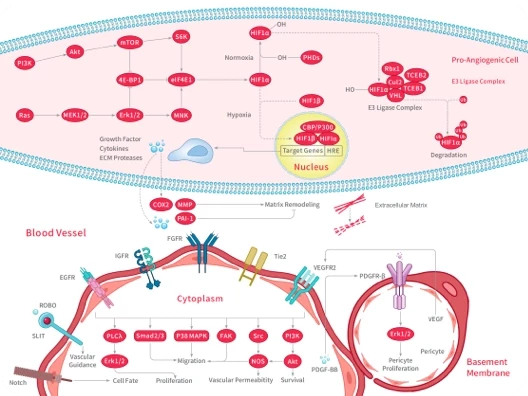- Remove All
 Your shopping cart is currently empty
Your shopping cart is currently empty
IRAK
The interleukin-1 receptor (IL-1R) associated kinase (IRAK) family plays a crucial role in the protective response to pathogens introduced into the human body by inducing acute inflammation followed by additional adaptive immune responses. IRAKs are essential components of the Interleukin-1 receptor signaling pathway and some Toll-like receptor signaling pathways. Toll-like receptors (TLRs) detect microorganisms by recognizing specific pathogen-associated molecular patterns (PAMPs) and IL-1R family members respond the interleukin-1 (IL-1) family cytokines. These receptors initiate an intracellular signaling cascade through adaptor proteins, primarily, MyD88. This is followed by the activation of IRAKs. TLRs and IL-1R members have a highly conserved amino acid sequence in their cytoplasmic domain called the Toll/Interleukin-1 (TIR) domain. The elicitation of different TLRs/IL-1Rs results in similar signaling cascades due to their homologous TIR motif leading to the activation of mitogen-activated protein kinases (MAPKs) and the IκB kinase (IKK) complex, which initiates a nuclear factor-κB (NF-κB) and AP-1-dependent transcriptional response of pro-inflammatory genes. Understanding the key players and their roles in the TLR/IL-1R pathway is important because the presence of mutations causing the abnormal regulation of Toll/IL-1R signaling leading to a variety of acute inflammatory and autoimmune diseases.IRAKs are membrane proximal putative serine-threonine kinases. Four IRAK family members have been described in humans: IRAK1, IRAK2, IRAKM, and IRAK4. Two are active kinases, IRAK-1 and IRAK-4, and two are inactive, IRAK-2 and IRAK-M, but all regulate the nuclear factor-κB (NF-κB) and mitogen-activated protein kinase (MAPK) pathways.
- $39
- $30
- $633
- $699
- $36
- $30
- $195
- $74
- $64
- $37
- $89
- $87
- $60
- $30
- $56
- $143
- $31
- $48
- $34
- $29
- $58
- $48
- $37
- $868

- $113
- $78
- Inquiry Price
- Inquiry Price
- Inquiry Price
- Inquiry Price
- Inquiry Price
- $1,970
- Inquiry Price
- Inquiry Price
- Inquiry Price

Copyright © 2015-2025 TargetMol Chemicals Inc. All Rights Reserved.











